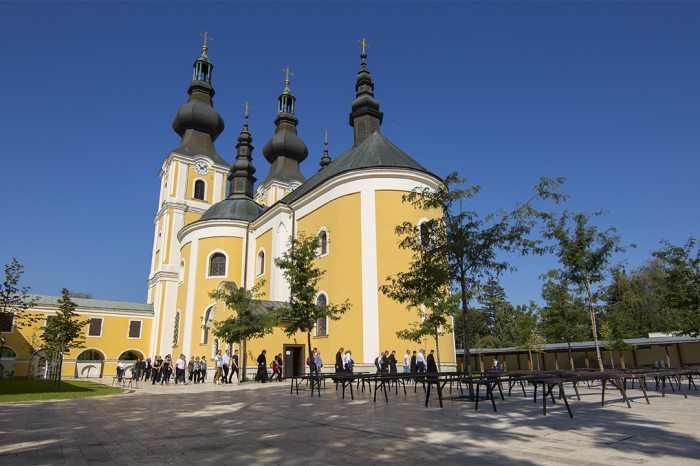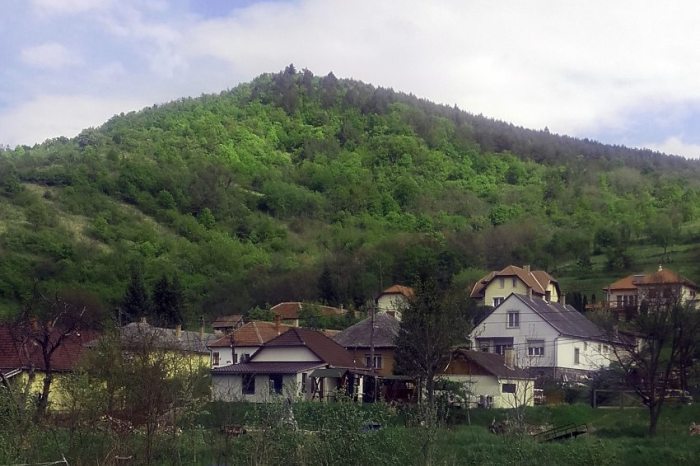Hungary's seven most beautiful pilgrim routes – Set off to arrive at yourself
You don't necessarily have to travel all the way to Bali to get away from the noise of the world. You can find physical and spiritual refreshment and true tranquillity – if you really seek it – on any of the pilgrim trails in Hungary. It is worth exploring Hungary's beautiful hidden religious and natural treasures to fill our hikes with deep meaning and to reach not only your destination but your innermost self, too. We selected some of the most beautiful and best-known Hungarian pilgrim trails.

We have just recovered from the shock of the pandemic, then the outbreak of war, and now we are trying to cope with the effects of the economic crisis in our lives. In this difficult terrain, we have to cope with 'everyday' challenges, too such as pressures at work, family conflicts, problems around children, or a series of unexpected decisions. We find it harder and harder to escape the treadmill of our fast-paced daily lives, which is perhaps why we are increasingly longing for quality me-time.
A well-planned pilgrimage is an excellent opportunity to do this, and it can be more than a simple hike or physical test: such a journey can, if we are willing and let it, lead us inwards towards our true selves, towards other people, and towards God.
A pilgrimage can also be seen as an allegory of our life since we are constantly confronted with bends, crossroads, mountains, and valleys during our life journey here on earth. We can experience all these while walking on the pilgrim trails, searching for the deeper meaning of our existence.
Hungary is a great place to go on pilgrimage, offering countless opportunities, beautiful trails, and historic holy sites. So now let's get to know the most beautiful and best-known pilgrim trails in Hungary, filling our time spent outdoors in the awakening nature with content on one of the Hungarian trails. We have put together a non-exhaustive list of the different routes to help you do this.
1. The Way of St James
Set off to arrive! There are two official starting points and routes for the Hungarian section of the Camino de Santiago. The main route starts from Budapest, at the Zero Kilometer Stone, and after about 200 kilometers you will arrive at the beautiful 800-year-old Romanesque church of St James in Lébény, which was an important stopping point for pilgrims of the past. And the Camino Benedictus, the branch of the St James pilgrimage route in Hungary linking Benedictine monasteries, starts from the Benedictine Abbey of Tihany and arrives at the church in Lébény after about 170 kilometres. From here, you can continue on to Slovakia and Austria, or all the way to Santiago de Compostela. You can find out about the routes, practical and spiritual preparation and other details on the St James' Way website.
2. Hungarian Pilgrim Route
The Hungarian Pilgrims’ Route (Magyar Zarándokút) leads from Esztergom to Máriagyűd, passing through holy places in Hungary. It passes through various historical routes (Roman road, Árpád-era roads, pilgrimage route to Jerusalem, route of the Crusades, The Way of St. James, etc.), from north to south.
It crosses Hungary from border to border, passing through the Pilis in the North, the Kiskunság National Park in the middle and the Mecsek Hills in the South. The total length of the pilgrimage route is about 431 kilometers, but including detours, it can be nearly 600 kilometers.
Half of the route is mountainous and the other half is flat lowland. The organizers suggest walking from the end of March to mid-November and say it requires a minimum of 16 days. At a more comfortable pace and with detours, it takes 18-24 days to complete. Pilgrimage accommodation is available at a reduced rate where possible, but a pilgrimage pass is required. For further details and information, please visit the website of the Hungarian Pilgrim's Route.
3. Via Mariae
The Via Mariae (Way of Mary) is not a route in itself, but rather a network of roads linking the different sanctuaries dedicated to Mary in Central Europe. Its east-west axis runs from Mariazell in Austria to Csíksomlyó in Transylvania, Romania, and there is also a north-south route; together they form a cross across Central Europe. The total length of the route is around 1,400 kilometers, which the organizers say can be covered on foot in 60 days. The Via Mariae is still being completed, and new sections will be added to the map to make the list of pilgrimage sites as complete as possible. For its Hungarian section, which includes the holy places of our people linked to Mary into the European route, the organizers have included, among others, the towns of Mariagyűd and Máriapócs. On their website, interactive pilgrimage maps, route descriptions, a list of holy places and accommodation can help you plan your own pilgrimage.
4. Via Margaritarum (The Way of the Pearls)
We are all on a journey - says the motto. According to the organizers, the spiritual arc of the Way of the Pearls is formed by the historical and sacred sites along the route, as well as a reflection booklet called The Pearls of Life. The entire 760-kilometer route connects Mátraverebély-Szentkút, Hungary, and Mariazell, Austria which were declared national shrines in 2006, while the nearly 180-kilometer route from Budapest to Mátraverebély is a pilgrimage route in itself.
It links such prominent cities of medieval Hungary as Buda, Esztergom, Székesfehérvár or Veszprém.
The website also offers practical advice as well as spiritual guidance.
5. The Way of St Elizabeth
Although the veneration of Saint Elizabeth has connected many people over the centuries, this actual, designated route has been open to modern-day pilgrims since 2007. It consists of five sections, starting from Sárospatak, where St Elisabeth of the House of Árpád was born. Passing through Bodrogolaszi, Komlóska, Erdőhorváti, Regéc, Telkibánya, Hollóháza and Füzér, the pilgrims cross the border via Alsómislye and Koksóbaksa to reach the final destination, the cathedral of Kassa in Slovakia. The five-day pilgrimage traditionally starts with a blessing after the Holy Mass on Pentecost Monday. Routes, historical overviews, and other general information are available on the website.
https://www.szenterzsebetut.hu/
6. St Martin's Way (Via Sancti Martini)
In 2005, the Council of Europe designated the route from Szombathely, Hungary to Tours, in France as a European Cultural Route to honour the life and outstanding monuments of the iconic saint Saint Martin, Europe's most popular saint. Saint Martin's life was marked by miracles and healings, and he also carried out important missionary work. The Way of Saint Martin is organized around two focal points, one in Szombathely (formerly Savaria), where Saint Martin was born, and the other in Tours, the former seat of his bishopric, where his tomb is located. The main route passes through Hungary, Slovenia, Italy, and France, with branches to several European countries. The Hungarian section of the route runs from Szombathely to Kercaszomor, a total length of 700 kilometers, of which only 100 kilometers are on the main route. For a detailed description of each route, news, and updates, visit the website.
https://www.viasanctimartini.eu/
7. Route of Medieval Churches
The Medieval Churches Trail leads through the northeastern regions of the Carpathian Basin, through the Szabolcs-Szatmár-Bereg county (Hungary), the Partium region (Romania), and the Transcarpathian region (Ukraine), linking the medieval churches of these areas, which are of unique artistic and historical value. Although the entire route includes sites in Transcarpathia and Máramaros (Maramures) region, Romania most of the attractions are in Hungary.
The Upper Tisza Region is a land of medieval churches, one of Hungary's richest landscapes in medieval ecclesiastical monuments, where the periods of Gothic and Reformation have left a unique cultural heritage.
The medieval churches in the villages of Csaroda, Lónya, Csengersima, Sonkád, Nyírbátor, and Csenger are all outstanding monuments of Hungarian art history. The route website provides, among other things, very detailed descriptions of the individual churches, monasteries, and villages.










